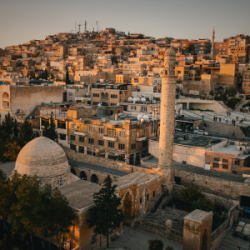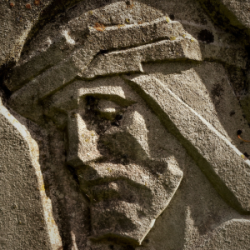Welcome readers! If you enjoy this post, please subscribe through the buttons on the right.

“This is how the birth of Jesus the anointed came about.” (Matthew 1.18)
Advent season has begun!
Over the next few weeks, we’ll look at the birth narratives of Jesus from 1st Century perspectives. In their cultural context, both Matthew’s and Luke’s birth narratives are about concrete liberation for oppressed Jewish people in the here and now. Matthew’s and Luke’s differ greatly on the details of the birth of Jesus but both speak of concrete liberation. We will read each story in the religious and political contexts they were written in. They intensely subvert the political theologies of their day.
Today, we have access to information that helps us rediscover the stories’ meaning to the first-century followers of Jesus and also to us today as well.
A Preliminary Word about Both Narratives
Something to note before we begin: these narratives are primarily concerned with this world, not with heaven. They are focused on liberation in this life, much like the Exodus liberation narratives of the Torah are. Too often, the birth narratives of Jesus are read through the lens of salvation defined as an entrance into post-mortem heaven. But that is not how the original Jewish Jesus community would have heard these stories.
That community was concerned with the whole of life, not merely with an afterlife. A spiritual, afterlife application of these narratives became the dominant interpretation through the cultural influence of the Christianizing and expanding Roman Empire. Reading the gospel narratives with an otherworldly focus has born an intensely destructive fruit ever since then. Before imperial Christianity, people understood these narratives to be about the liberation and transformation of our communities and this world. They were not solely religious stories; they were also political, economic, and social, with distributively just imaginings of an end of violence, injustice, and oppression.
The Importance of Context
If we are going to wrest these two narratives from centuries of purely religious and otherworldly interpretations, we must discover their historical context. Once we see that context, we cannot unsee it. Once we know it, we cannot unknow it. Learning this context for myself has forever changed how I read the birth narratives of Jesus, so I want to share that journey with you.
This week, we’ll begin with Matthew’s narrative. We will consider why Herod is the focus and why the Magi are included. Next time, we will explore Luke’s birth narrative. My hope is the information in this series will enable you to read the birth narratives in Matthew and Luke anew. And I hope that these narratives, seen in their own contexts, will renew your heart and hope, and inspire you as a Jesus follower to more deeply embody their focus on transforming this world.













